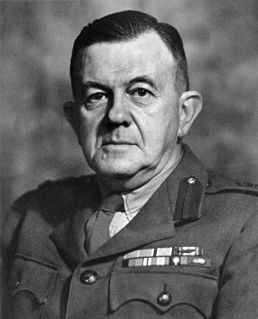This article does not cite any sources .(April 2015) (Learn how and when to remove this template message) |
This article does not cite any sources .(April 2015) (Learn how and when to remove this template message) |
Joshua Harold Burn FRS was an English pharmacologist and Emeritus Professor of Pharmacology at Oxford University.

Malcolm Dixon was a British biochemist.

Brigadier Sir Neil Hamilton Fairley, was an Australian physician, medical scientist, and army officer; who was instrumental in saving thousands of Allied lives from malaria and other diseases.

Prof Alfred Newton Richards was an American pharmacologist.

Her Majesty's Paymaster General or HM Paymaster General is a ministerial position in the United Kingdom. When the post is held by a minister in HM Treasury it is typically given to the fourth highest-ranking minister, after the First Lord of the Treasury, the Chancellor of the Exchequer and the Chief Secretary to the Treasury. The incumbent Paymaster General is Mel Stride, whose main title is Financial Secretary to the Treasury.

Baron Clanmorris, of Newbrook in the County of Mayo, is a title in the Peerage of Ireland. It was created on 6 August 1800 for John Bingham. He was a descendant of John Bingham of Foxford in County Mayo, whose brother Sir Henry Bingham, 1st Baronet, of Castlebar, was the ancestor of the Earls of Lucan. The first Baron's great-great-great-grandson, the seventh Baron, was a spy and crime novelist. As of 2010 the title is held by the latter's son, the eighth Baron, who succeeded in 1988.

Baron Hankey, of The Chart in the County of Surrey, is a title in the Peerage of the United Kingdom. It was created in 1939 for the civil servant Sir Maurice Hankey, Cabinet Secretary from 1920 to 1938. His eldest son, the second Baron, was a diplomat and served as British Ambassador to Sweden between 1954 and 1960. As of 2016 the title is held by the latter's eldest son, the third Baron, who succeeded in 1996. He is an architect.

Maurice Pascal Alers Hankey, 1st Baron Hankey, was a British civil servant who gained prominence as the first Cabinet Secretary and who later made the rare transition from the civil service to ministerial office. He is best known as the highly efficient top aide to Prime Minister David Lloyd George and the War Cabinet that directed Britain in the First World War.
The Lord Deputy was the representative of the monarch and head of the Irish executive under English rule, during the Lordship of Ireland and then the Kingdom of Ireland. He deputised prior to 1523 for the Viceroy of Ireland. The plural form is "Lords Deputy".
This is a list of people who served as Lord Lieutenant of County Roscommon.

Edward Ettingdene Bridges, 1st Baron Bridges, was a British civil servant.

There have been two baronetcies created for members of the Pease family, both in the Baronetage of the United Kingdom. Both titles are extant.
Robert Maurice Alers Hankey, 2nd Baron Hankey, was a British diplomat and public servant.
The High Sheriff of Mayo was the British Crown's judicial representative in County Mayo, Ireland from the 16th century until 1922, when the office was abolished in the new Free State and replaced by the office of Mayo County Sheriff. The sheriff had judicial, electoral, ceremonial and administrative functions and executed High Court Writs. In 1908, an Order in Council made the Lord-Lieutenant the Sovereign's prime representative in a county and reduced the High Sheriff's precedence. However the sheriff retained his responsibilities for the preservation of law and order in the county. The usual procedure for appointing the sheriff from 1660 onwards was that three persons were nominated at the beginning of each year from the county and the Lord Lieutenant then appointed his choice as High Sheriff for the remainder of the year. Often the other nominees were appointed as under-sheriffs. Sometimes a sheriff did not fulfil his entire term through death or other event and another sheriff was then appointed for the remainder of the year. The dates given hereunder are the dates of appointment. All addresses are in County Mayo unless stated otherwise.
The High Sheriff of Kildare was the British Crown's judicial representative in County Kildare, Ireland from the 16th century until 1922, when the office was abolished in the new Free State and replaced by the office of Kildare County Sheriff. The High Sheriff had judicial, electoral, ceremonial and administrative functions and executed High Court Writs. In 1908, an Order in Council made the Lord Lieutenant the Sovereign's prime representative in a county and reduced the High Sheriff's precedence. However the sheriff retained his responsibilities for the preservation of law and order in the county. The usual procedure for appointing the sheriff from 1660 onwards was that three persons were nominated at the beginning of each year from the county and the Lord Lieutenant then appointed his choice as High Sheriff for the remainder of the year. Often the other nominees were appointed as under-sheriffs. Sometimes a sheriff did not serve his full term due to death or another event, and another sheriff was then appointed for the remainder of the year. The dates given in this article are the dates of appointment.
The 1902 Birthday Honours were announced on 10 November 1902, to celebrate the birthday of Edward VII the previous day. The list included appointments to various orders and honours of the United Kingdom and the British Empire.
The 1885 Dissolution Honours List was issued in June 1885 prior to the general election of that year.